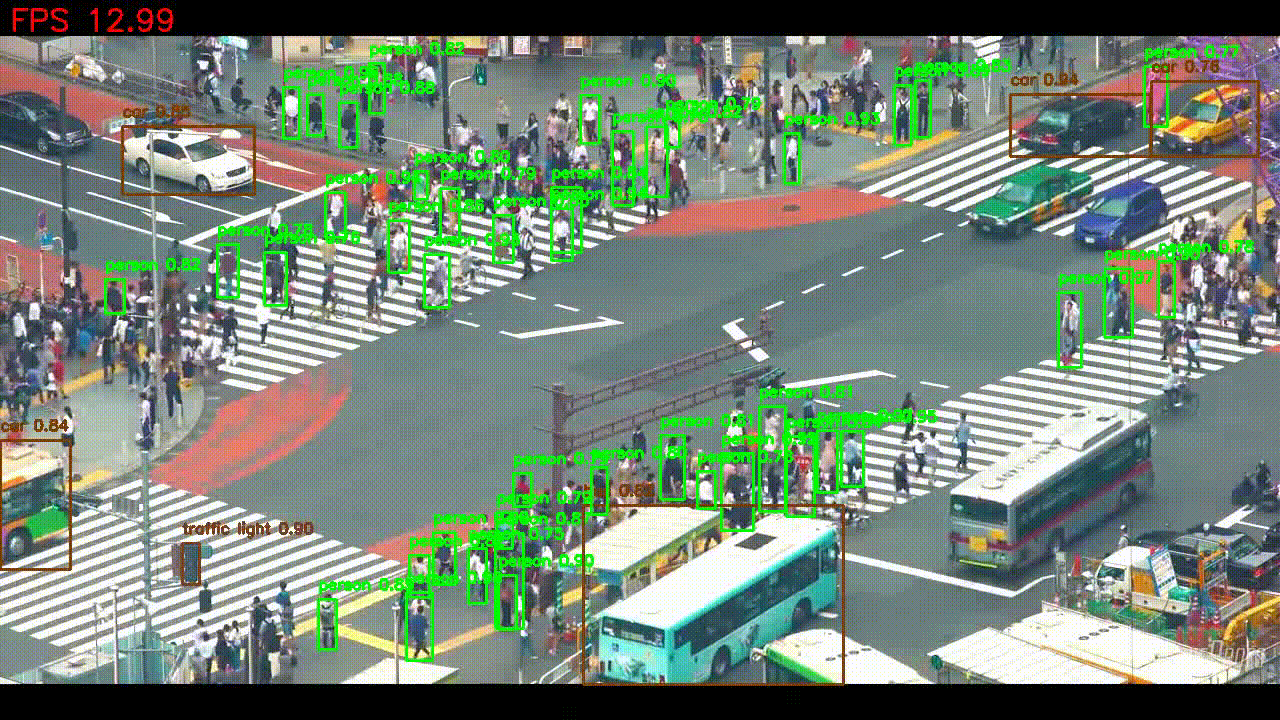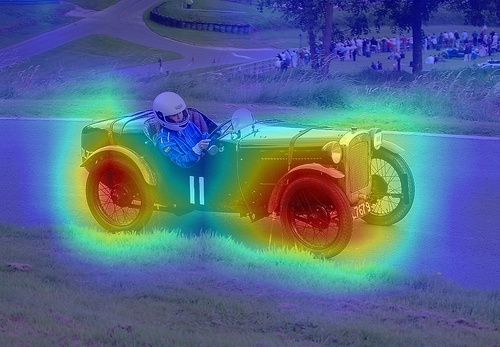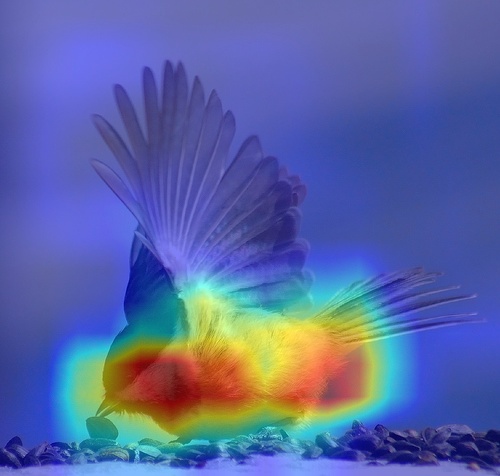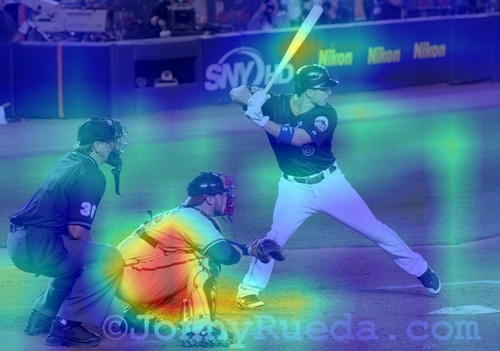In this work, we propose NORTON (enhanced Network cOmpRession through TensOr decompositions and pruNing), a novel method for network compression. NORTON introduces the concept of filter decomposition, enabling a more detailed decomposition of the network while preserving the weight's multidimensional properties. Our method incorporates a novel structured pruning approach, effectively integrating the decomposed model. Through extensive experiments on various architectures, benchmark datasets, and representative vision tasks, we demonstrate the usefulness of our method. NORTON achieves superior results compared to state-of-the-art techniques in terms of complexity and accuracy.
- 2024.02.23: Paper accepted by IEEE TNNLS 🎊. Preprint available here.
- 2024.02.01: Add ablation study 📊 on the impact of rank and pruning ratio selection.
- 2023.11.14: Add qualitative assessment of feature preservation.
- 2023.10.31: 👻 🎃 Add instance segmentation and keypoint detection visualization.
- 2023.8.23: Throughput acceleration 🌠 experiment is released 🎉.
- 2023.8.01: Detail instructions for checkpoint verification are released.
- 2023.7.28: Baseline and compressed checkpoints 🎁 are released.
- 2023.7.26: Paper submitted to IEEE TNNLS. The code is released. Stay tuned for more exciting updates!⌛
In order to demonstrate the adaptability of NORTON, we assess three representative architectures: VGG-16-BN, ResNet-56/110 with residual blocks, and DenseNet-40 with dense blocks. These models are tested on the CIFAR-10 dataset. Additionally, to validate the scalability of NORTON, experiments are conducted on the challenging ImageNet dataset using the ResNet-50 architecture. Furthermore, the compressed ResNet-50 model is employed as the backbone network for FasterRCNN-FPN, MaskRCNN, and KeypointRCNN on the COCO-2017 dataset.
NORTON is compared with the SOTA in the fields of low-rank decompositions, structured pruning, and hybrid methods.
1. VGG-16-BN/CIFAR-10
| Model | Top-1 (%) | MACs (↓%) | Params. (↓%) |
|---|---|---|---|
| VGG-16-BN | 93.96 | 313.73M (00) | 14.98M (00) |
| HRank-1 | 93.43 | 145.61M (54) | 2.51M (83) |
| CHIP | 93.86 | 131.17M (58) | 2.76M (82) |
| EZCrop | 93.01 | 131.17M (58) | 2.76M (82) |
| DECORE-500 | 94.02 | 203.08M (35) | 5.54M (63) |
| AutoBot | 94.19 | 145.61M (54) | 7.53M (50) |
| NORTON (Ours) | 94.45 | 126.49M (60) | 2.58M (83) |
| HRank-2 | 92.34 | 108.61M (65) | 2.64M (82) |
| DECORE-200 | 93.56 | 110.51M (65) | 1.66M (89) |
| EZCrop | 93.70 | 104.78M (67) | 2.50M (83) |
| CHIP | 93.72 | 104.78M (67) | 2.50M (83) |
| AutoBot | 94.01 | 108.71M (65) | 6.44M (57) |
| NORTON (Ours) | 94.16 | 101.91M (68) | 2.34M (84) |
| WhiteBox | 93.47 | 75.30M (76) | N/A |
| AutoBot | 93.62 | 72.60M (77) | 5.51M (63) |
| NORTON (Ours) | 94.11 | 74.14M (77) | 3.60M (76) |
| QSFM | 92.17 | 79.00M (75) | 3.68M (75) |
| DECORE-100 | 92.44 | 51.20M (82) | 0.51M (96) |
| FSM | 92.86 | 59.61M (81) | 1.50M (90) |
| ALDS | 92.67 | 66.95M (86) | 1.90M (96) |
| Lebedev et al. | 93.07 | 68.53M (78) | 3.22M (78) |
| EPruner-0.73 | 93.08 | 74.42M (76) | 1.65M (89) |
| HALOC | 93.16 | 43.92M (86) | 0.30M (98) |
| CHIP | 93.18 | 66.95M (79) | 1.90M (87) |
| ASTER | 93.45 | 60.00M (81) | N/A |
| FSM | 93.73 | 106.67M (66) | 2.10M (86) |
| NORTON (Ours) | 93.84 | 37.68M (88) | 1.94M (87) |
| HRank-3 | 91.23 | 73.70M (77) | 1.78M (92) |
| DECORE-50 | 91.68 | 36.85M (88) | 0.26M (98) |
| NORTON (Ours) | 92.54 | 13.54M (96) | 0.24M (98) |
| NORTON (Ours) | 90.32 | 4.58M (99) | 0.14M (99) |
2. ResNet-56/110/CIFAR-10
| Model | Top-1(%) | MACs (↓%) | Params. (↓%) |
|---|---|---|---|
| ResNet-56 | 93.26 | 125.49M (00) | 0.85M (00) |
| HRank-1 | 93.52 | 88.72M (29) | 0.71M (17) |
| DECORE-450 | 93.34 | 92.48M (26) | 0.64M (24) |
| FilterSketch | 93.65 | 88.05M (30) | 0.68M (21) |
| TPP | 93.81 | 86.59M (31) | N/A |
| WHC | 93.91 | 90.35M (28) | N/A |
| NORTON (Ours) | 94.46 | 93.34M (27) | 0.58M (31) |
| HRank-2 | 93.17 | 62.72M (50) | 0.49M (42) |
| FilterSketch | 93.19 | 73.36M (41) | 0.50M (41) |
| DECORE-200 | 93.26 | 62.93M (50) | 0.43M (49) |
| TPP | 93.46 | 62.75M (50) | N/A |
| MFP | 93.56 | 59.40M (53) | N/A |
| FSM | 93.63 | 61.49M (51) | 0.48M (44) |
| CC-0.5 | 93.64 | 60.00M (52) | 0.44M (48) |
| NORTON (Ours) | 94.00 | 73.22M (42) | 0.44M (48) |
| QSFM | 91.88 | 50.62M (60) | 0.25M (71) |
| CHIP | 92.05 | 34.79M (72) | 0.24M (72) |
| TPP | 92.35 | 36.39M (71) | N/A |
| NORTON (Ours) | 93.81 | 37.52M (71) | 0.21M (75) |
| HRank-3 | 90.72 | 32.52M (74) | 0.27M (68) |
| DECORE-55 | 90.85 | 23.22M (81) | 0.13M (85) |
| FilterSketch | 91.20 | 32.47M (74) | 0.24M (72) |
| NORTON (Ours) | 91.62 | 14.47M (89) | 0.08M (91) |
| ResNet-110 | 93.50 | 256.04M (00) | 1.73M (00) |
| DECORE-500 | 93.88 | 163.30M (35) | 1.11M (36) |
| NORTON (Ours) | 94.85 | 163.00M (35) | 1.08M (38) |
| DECORE-300 | 93.50 | 96.66M (62) | 0.61M (65) |
| NORTON (Ours) | 94.11 | 92.99M (64) | 0.59M (65) |
| DECORE-175 | 92.71 | 58.37M (77) | 0.35M (80) |
| NORTON (Ours) | 92.77 | 47.34M (82) | 0.30M (83) |
3. DenseNet-40/CIFAR-10
| Model | Top-1(%) | MACs (↓%) | Params. (↓%) |
|---|---|---|---|
| DenseNet-40 | 94.81 | 282.92M (00) | 1.04M (00) |
| DECORE-175 | 94.85 | 228.96M (19) | 0.83M (21) |
| NORTON (Ours) | 94.86 | 213.58M (26) | 0.74M (30) |
| HRank-1 | 94.24 | 167.41M (41) | 0.66M (37) |
| DECORE-115 | 94.59 | 171.36M (39) | 0.56M (46) |
| AutoBot | 94.67 | 167.64M (42) | 0.76M (28) |
| NORTON (Ours) | 94.67 | 168.23M (42) | 0.58M (45) |
| HRank-2 | 93.68 | 110.15M (61) | 0.48M (54) |
| EZCrop | 93.76 | 113.08M (60) | 0.39M (62) |
| DECORE-70 | 94.04 | 128.13M (55) | 0.37M (65) |
| NORTON (Ours) | 94.14 | 123.14M (58)** | 0.40M (62) |
4. ResNet-50/Imagenet
| Model | Top-1 | Top-5 | MACs(↓%) | Params(↓%) |
|---|---|---|---|---|
| ResNet-50 | 76.15 | 92.87 | 4.09G(00) | 25.50M(00) |
| ABCPruner-100% | 72.84 | 92.97 | 2.56G(37) | 18.02M(29) |
| CLR-RNF-0.2 | 74.85 | 92.31 | 2.45G(40) | 16.92M(34) |
| EPruner-0.81 | 74.95 | 92.36 | 2.37G(42) | N/A |
| FilterSketch-0.7 | 75.22 | 92.41 | 2.64G(36) | 16.95M(33) |
| Kim et al. | 75.34 | 92.68 | N/A | 17.60M(31) |
| PFP | 75.91 | 92.81 | 3.65G(11) | 20.88M(18) |
| LeGR | 76.20 | 93.00 | 2.99G(27) | N/A |
| DECORE-8 | 76.31 | 93.02 | 3.54G(13) | 22.69M(11) |
| CHIP | 76.30 | 93.02 | 2.26G(44) | 15.10M(41) |
| TPP | 76.44 | N/A | 2.74G(33) | N/A |
| NORTON (Ours) | 76.91 | 93.57 | 2.32G(43) | 14.51M(43) |
| FilterSketch-0.6 | 74.68 | 92.17 | 2.23G(46) | 14.53M(43) |
| Hinge | 74.70 | N/A | 2.17G(47) | N/A |
| HRank-1 | 74.98 | 92.33 | 2.30G(44) | 16.15M(37) |
| DECORE-6 | 74.58 | 92.18 | 2.36G(42) | 14.10M(45) |
| PFP | 75.21 | 92.43 | 2.29G(44) | 17.82M(30) |
| WhiteBox | 75.32 | 92.43 | 2.22G(46) | N/A |
| EZCrop | 75.68 | 92.70 | 2.26G(45) | 15.09M(41) |
| LeGR | 75.70 | 92.70 | 2.37G(42) | N/A |
| DepGraph | 75.83 | N/A | 2.09G(49) | N/A |
| SCOP | 75.95 | 92.79 | 2.24G(45) | 14.59M(43) |
| CATRO | 75.98 | 92.79 | 2.21G(46) | N/A |
| WHC | 76.06 | 92.86 | 2.37G(42) | N/A |
| CHIP | 76.15 | 92.91 | 2.10G(49) | 14.23M(44) |
| NORTON (Ours) | 76.58 | 93.43 | 2.08G(50) | 13.51M(47) |
| HRank-2 | 71.98 | 91.01 | 1.55G(62) | 13.77M(46) |
| FilterSketch-0.4 | 73.04 | 91.18 | 1.51G(63) | 10.40M(59) |
| WhiteBox | 74.21 | 92.01 | 1.50G(63) | N/A |
| EZCrop | 74.33 | 92.00 | 1.52G(63) | 11.05M(57) |
| DAIS | 74.45 | 92.21 | 1.83G(55) | N/A |
| CC-0.6 | 74.54 | 92.25 | 1.53G(63) | 10.58M(59) |
| Phan et al. | 74.68 | 92.16 | 1.56G(62) | N/A |
| MFP | 74.86 | 92.43 | 1.88G(54) | N/A |
| TPP | 75.12 | N/A | 1.60G(61) | N/A |
| SCOP | 75.26 | 92.53 | 1.86G(55) | 12.29M(52) |
| CHIP | 75.26 | 92.53 | 1.52G(63) | 11.04M(57) |
| NORTON (Ours) | 75.95 | 92.91 | 1.49G(64) | 10.52M(59) |
| HRank-3 | 69.10 | 89.58 | 0.98G(76) | 8.27M(68) |
| DECORE-5 | 72.06 | 90.82 | 1.60G(61) | 8.87M(65) |
| ABCPruner-50% | 72.58 | 90.91 | 1.30G(68) | 9.10M(64) |
| CHIP | 72.30 | 90.74 | 0.95G(77) | 8.01M(69) |
| CLR-RNF-0.44 | 72.67 | 91.09 | 1.23G(70) | 9.00M(65) |
| EPruner-0.81 | 72.73 | 91.01 | 1.29G(68) | N/A |
| NORTON (Ours) | 74.00 | 92.00 | 0.96G(77) | 7.96M(69) |
| FilterSketch-0.2 | 69.43 | 89.23 | 0.93G(77) | 7.18M(72) |
| DECORE-4 | 69.71 | 89.37 | 1.19G(71) | 6.12M(76) |
| CURL | 73.39 | 91.46 | 1.11G(73) | 6.67M(74) |
| NORTON (Ours) | 73.65 | 91.64 | 0.92G(78) | 5.88M(77) |
5. Faster/Mask/Keypoint-RCNN/COCO-2017
| Model | AP0.5:0.95 | AP0.5 | AP0.75 | AR1 | AR10 | AR100 | MACs(↓%) | Params(↓%) |
|---|---|---|---|---|---|---|---|---|
| FasterRCNN | 0.37 | 0.58 | 0.39 | 0.31 | 0.48 | 0.51 | 134.85G(00) | 41.81M(00) |
| NORTON (Ours) | 0.37 | 0.58 | 0.39 | 0.31 | 0.49 | 0.51 | 111.47G(17) | 30.72M(27) |
| NORTON (Ours) | 0.32 | 0.52 | 0.34 | 0.29 | 0.46 | 0.48 | 93.39G(31) | 22.01M(47) |
| MaskRCNN | 0.34 | 0.55 | 0.36 | 0.29 | 0.45 | 0.47 | 134.85G(00) | 44.46M(00) |
| NORTON (Ours) | 0.35 | 0.57 | 0.37 | 0.30 | 0.46 | 0.48 | 111.47G(17) | 33.36M(25) |
| NORTON (Ours) | 0.32 | 0.52 | 0.33 | 0.28 | 0.44 | 0.46 | 93.39G(31) | 24.65M(45) |
| AR0.5:0.95 | AR0.5 | AR0.75 | ||||||
| KeypointRCNN | 0.65 | 0.86 | 0.71 | 0.71 | 0.90 | 0.77 | 137.42G(00) | 59.19M(00) |
| NORTON (Ours) | 0.65 | 0.86 | 0.71 | 0.71 | 0.91 | 0.77 | 114.04G(17) | 48.10M(19) |
| NORTON (Ours) | 0.63 | 0.85 | 0.69 | 0.69 | 0.90 | 0.75 | 95.97G(30) | 39.39M(34) |
1. Verify our results
Please download the checkpoints and evaluate their performance with the corresponding script and dataset.
-
Download the checkpoints
Notes: The name of the checkpoint contains meta-data, including architecture, decomposition rank, pruning ratio, and top-1 validation accuracy. For example,
vgg_16_bn_[0.6]*6+[0.8]*7_1_90.32.ptis a VGG-16-BN model which is compressed with rank1along with a pruning ratio of[0.6]*6+[0.8]*7. This checkpoint reaches90.32% top-1 validation accuracy. -
Download the datasets
-
Use evaluate.py to validate the performance of the checkpoints.
(base) tien@p3660:~/NORTON$ python evaluate.py -h usage: Model evaluation [-h] [--data_dir DATA_DIR] [--arch {vgg_16_bn,resnet_56,resnet_110,densenet_40,resnet_50}] [--ckpt CKPT] [--batch_size BATCH_SIZE] [--gpu GPU] [-r RANK] [-cpr COMPRESS_RATE] optional arguments: -h, --help show this help message and exit --data_dir DATA_DIR path to dataset --arch {vgg_16_bn,resnet_56,resnet_110,densenet_40,resnet_50} architecture --ckpt CKPT checkpoint path --batch_size BATCH_SIZE batch size --gpu GPU Select gpu to use -r RANK, --rank RANK use pre-specified rank for all layers -cpr COMPRESS_RATE, --compress_rate COMPRESS_RATE list of compress rate of each layer
For examples:
(base) tien@p3660:~/NORTON$ python verify.py --arch vgg_16_bn --ckpt ~/ckpt/compressed/vgg16/vgg_16_bn_\[0.6\]\*6+\[0.8\]\*7_1_90.32.pt -r 1 -cpr [0.6]*6+[0.8]*7 08/01 11:59:40 AM | args = Namespace(data_dir='~/data', arch='vgg_16_bn', ckpt='/home/tien/ckpt/compressed/vgg16/vgg_16_bn_[0.6]*6+[0.8]*7_1_90.32.pt', batch_size=256, rank=1, compress_rate='[0.6]*6+[0.8]*7') Loading data: Files already downloaded and verified Files already downloaded and verified 08/01 11:59:41 AM | Loading checkpoint 08/01 11:59:41 AM | Evaluating model: 08/01 11:59:42 AM | * Acc@1 90.320 Acc@5 99.450 (base) tien@p3660:~/NORTON$ python verify.py --arch densenet_40 --ckpt ~/ckpt/compressed/densenet40/densenet_40_\[0.\]+\[0.08\]\*6+\[0.09\]\*6+\[0.08\]\*26_8_94.86.pt -r 8 -cpr [0.]+[0.08]*6+[0.09]*6+[0.08]*26 08/01 12:00:43 PM | args = Namespace(data_dir='~/data', arch='densenet_40', ckpt='/home/tien/ckpt/compressed/densenet40/densenet_40_[0.]+[0.08]*6+[0.09]*6+[0.08]*26_8_94.86.pt', batch_size=256, rank=8, compress_rate='[0.]+[0.08]*6+[0.09]*6+[0.08]*26') Loading data: Files already downloaded and verified Files already downloaded and verified 08/01 12:00:44 PM | Loading checkpoint 08/01 12:00:44 PM | Evaluating model: 08/01 12:00:49 PM | * Acc@1 94.860 Acc@5 99.770 (base) tien@p3660:~/NORTON$ python verify.py --arch resnet_50 --ckpt ~/ckpt/compressed/resnet50/resnet_50_pabs_\[0.\]+\[0.1\]\*2+\[0.4\]\*5+\[0.75\]\*12_1_73.65.pt -r 1 -cpr [0.]+[0.1]*2+[0.4]*5+[0.75]*12 --data_dir ~/sim3/imagenet/ 08/01 12:05:51 PM | args = Namespace(data_dir='/home/tien/sim3/imagenet/', arch='resnet_50', ckpt='/home/tien/ckpt/compressed/resnet50/resnet_50_pabs_[0.]+[0.1]*2+[0.4]*5+[0.75]*12_1_73.65.pt', batch_size=256, gpu='0', rank=1, compress_rate='[0.]+[0.1]*2+[0.4]*5+[0.75]*12') Loading data: 08/01 12:06:20 PM | Loading checkpoint 08/01 12:06:20 PM | Evaluating model: 08/01 12:08:38 PM | * Acc@1 73.652 Acc@5 91.634
-
Use complexity.py to verify the complexity.
(base) tien@p3660:~/NORTON$ python complexity.py -h usage: Compute model complexity [-h] [--dataset {cifar10,imagenet,coco}] [--arch {vgg_16_bn,resnet_56,resnet_110,densenet_40,resnet_50,fasterrcnn_CPresnet50_fpn,maskrcnn_CPresnet50_fpn,keypointrcnn_CPresnet50_fpn}] [-r RANK] [-cpr COMPRESS_RATE] optional arguments: -h, --help show this help message and exit --dataset {cifar10,imagenet,coco} dataset --arch {vgg_16_bn,resnet_56,resnet_110,densenet_40,resnet_50,fasterrcnn_CPresnet50_fpn,maskrcnn_CPresnet50_fpn,keypointrcnn_CPresnet50_fpn} architecture -r RANK, --rank RANK use pre-specified rank for all layers -cpr COMPRESS_RATE, --compress_rate COMPRESS_RATE list of compress rate of each layer
For examples:
(base) tien@p3660:~/NORTON$ python complexity.py --arch vgg_16_bn -r 1 -cpr [0.6]*6+[0.8]*7 [INFO] Register count_convNd() for <class 'torch.nn.modules.conv.Conv2d'>. [INFO] Register zero_ops() for <class 'torch.nn.modules.container.Sequential'>. [INFO] Register count_normalization() for <class 'torch.nn.modules.batchnorm.BatchNorm2d'>. [INFO] Register zero_ops() for <class 'torch.nn.modules.activation.ReLU'>. [INFO] Register zero_ops() for <class 'torch.nn.modules.pooling.MaxPool2d'>. [INFO] Register count_linear() for <class 'torch.nn.modules.linear.Linear'>. [INFO] Register count_normalization() for <class 'torch.nn.modules.batchnorm.BatchNorm1d'>. Computational complexity: 4582498.0 Number of parameters: 149648.0 FLOPs_reduced = 98.54 param_reduced = 99.00 (base) tien@p3660:~/NORTON$ python complexity.py --arch densenet_40 -r 8 -cpr [0.]+[0.08]*6+[0.09]*6+[0.08]*26 [INFO] Register count_convNd() for <class 'torch.nn.modules.conv.Conv2d'>. [INFO] Register zero_ops() for <class 'torch.nn.modules.container.Sequential'>. [INFO] Register count_normalization() for <class 'torch.nn.modules.batchnorm.BatchNorm2d'>. [INFO] Register zero_ops() for <class 'torch.nn.modules.activation.ReLU'>. [INFO] Register count_avgpool() for <class 'torch.nn.modules.pooling.AvgPool2d'>. [INFO] Register count_linear() for <class 'torch.nn.modules.linear.Linear'>. Computational complexity: 213587810.0 Number of parameters: 745468 FLOPs_reduced = 26.38 param_reduced = 29.63 (base) tien@p3660:~/NORTON$ python complexity.py --dataset imagenet --arch resnet_50 -r 1 -cpr [0.]+[0.1]*2+[0.4]*5+[0.75]*12 [INFO] Register count_convNd() for <class 'torch.nn.modules.conv.Conv2d'>. [INFO] Register count_normalization() for <class 'torch.nn.modules.batchnorm.BatchNorm2d'>. [INFO] Register zero_ops() for <class 'torch.nn.modules.activation.ReLU'>. [INFO] Register zero_ops() for <class 'torch.nn.modules.pooling.MaxPool2d'>. [INFO] Register zero_ops() for <class 'torch.nn.modules.container.Sequential'>. [INFO] Register count_adap_avgpool() for <class 'torch.nn.modules.pooling.AdaptiveAvgPool2d'>. [INFO] Register count_linear() for <class 'torch.nn.modules.linear.Linear'>. Computational complexity: 923650408.0 Number of parameters: 5885736 FLOPs_reduced = 77.59 param_reduced = 76.97
2. Reproduce our results
- Use decompose.py, prune.py, and main_imagenet.py to reproduce our results. Detailed instructions will be added soon.
- Use detection/train.py to take compressed ResNet-50/Imagenet as the backbone models for training Faster/Mask/Keypoint-RCNN on COCO.
3. Further development
While this paper primarily focuses on compressing models using CPD due to its simplicity and representativeness, our proposed framework is highly general and can be readily applied to other tensor decomposition approaches, such as TD, TT, etc. It is important to highlight that different decomposition methods can be adapted to NORTON in various ways, such as layer decomposition or filter decomposition approaches. Similarly, the pruning phase can be customized by replacing our similarity-based pruning method with other pruning techniques that are more suitable for specific problems. The orthogonality of NORTON allows for flexible integration of different decomposition and pruning techniques.
Please see decomposition and pruning for more details.
- FasterRCNN for object detection

|

|
- MaskRCNN for instance segmentation

|

|
- KeypointRCNN for human keypoint detection

|

|
To underscore the practical advantages of NORTON, an experiment was meticulously conducted, involving a direct comparison between a baseline model and a compressed model, both tailored for object detection tasks. Leveraging the FasterRCNN_ResNet50_FPN architecture on a RTX 3060 GPU, the experiment robustly highlights the substantial performance enhancement achieved by NORTON. The accompanying GIFs offer a vivid visual depiction: the baseline model showcases an inference speed of approximately 9 FPS, while the NORTON-compressed model boasts a remarkable twofold acceleration in throughput. This notable disparity effectively showcases NORTON's efficacy and scalability, firmly establishing its relevance and applicability across diverse deployment scenarios.
Note: For replication of this experiment, please refer to detection/README.md.
| Input | CR=0% | CR=50% | CR=64% | CR=78% |
|---|---|---|---|---|
 |
 |
 |
 |
|
 |
 |
 |
 |
|
 |
 |
 |
 |
|
 |
 |
 |
 |
|
 |
 |
 |
 |
The visual representation underscores NORTON's efficacy in retaining crucial features across a diverse range of classes. Noteworthy is its consistent robustness in capturing and preserving essential information at different CRs. This resilience implies sustained effectiveness and reliability across varying scenarios and compression levels, positioning NORTON as a versatile choice for network compression across diverse applications and datasets.
We present a comprehensive analysis of the complexity reduction, approximation error, and accuracy metrics both before and after fine-tuning. The results reveal an interesting trend: without fine-tuning, a higher rank leads to better weight approximation, albeit with less compression achieved. Specifically, when
| Rank | MACs | Params | NMSE | Acc. without FT | Acc. with FT |
|---|---|---|---|---|---|
| 1 | 88.03 | 87.06 | 0.6265 | 10.00 | 93.84 |
| 2 | 76.44 | 75.98 | 0.4114 | 10.00 | 94.11 |
| 3 | 64.85 | 64.91 | 0.2760 | 68.37 | 94.18 |
| 4 | 53.27 | 53.84 | 0.1837 | 88.30 | 94.07 |
| 5 | 41.69 | 42.76 | 0.1173 | 92.44 | 94.22 |
| 6 | 30.10 | 31.69 | 0.0698 | 93.45 | 94.15 |
| 7 | 18.51 | 20.61 | 0.0372 | 93.90 | 94.11 |
| 8 | 6.93 | 9.54 | 0.0137 | 94.03 | 94.03 |
Complexity reduction, approximation error, and accuracy with and without fine-tuning with respect to the rank.
This study aims to offer a comprehensive insight into how the choice of rank and pruning ratio influences both complexity reduction and model performance. Given a predefined goal for complexity reduction, the selection of rank and pruning ratio introduces variability in outcomes. For instance, aiming to eliminate approximately 65% of Multiply-Accumulate operations (MACs), as illustrated below, presents multiple choices such as 3N, 4S, 6M, and 8H. Interestingly, these choices, while achieving similar MACs reduction, result in varying accuracy after fine-tuning—94.18%, 93.67%, 92.77%, and 93.15%, respectively. Notably, despite similar MACs reductions, these combinations lead to different levels of parameter reduction: 64.91%, 68.33%, 78.34%, and 87.49%, respectively. This observation prompts further investigation into determining the optimal combination of rank and pruning ratio, particularly in the context of hybrid compression approaches.
- Integrate other decomposition and pruning techniques.
- Write detailed documentation.
- Upload compressed models.
- Clean code.
In this work, we have proposed NORTON, a novel network compression method. This hybrid approach enjoys the advantages of both tensor decomposition and structured pruning by combining them orthogonally. Its superiority is demonstrated through various experiments and analyses. We introduce the concept of filter decomposition for the first time in the literature, along with the discrimination of approach in tensor decomposition which was ambiguous before. Besides, the novel distance-based structured pruning algorithm is developed and proved to incorporate well with the decomposition phase. We hope that the new perspective of NORTON and its template may inspire more developments 🚀🚀🚀 on network compression via filter decomposition and hybrid approach.
Your contributions can play a significant role in this endeavor, and we warmly welcome your participation in our project!
To contact us, never hesitate to send an email to pvti@gmail.com (for technical problems), zniyed@univ-tln.fr (for tensor decompositions), or tpnguyen@univ-tln.fr (for general development)!
If the code and paper help your research, please kindly cite:
@article{pham2024enhanced,
title={Enhanced network compression through tensor decompositions and pruning},
author={Pham, Van Tien and Zniyed, Yassine and Nguyen, Thanh Phuong},
journal={IEEE Transactions on Neural Networks and Learning Systems},
year={2024}
}
This work was granted access to the HPC resources of IDRIS under the allocation 2023-103147 made by GENCI.
The work of T.P. Nguyen is partially supported by ANR ASTRID ROV-Chasseur.
This code is developed based on excellent open-sourced projects including Torchvision, HRankPlus, and Tensor Decompositions.






